In this blog, we will understand what cost accounting is, its key purposes, its formulas and types, some practical examples and how record to report software helps ensure accurate accounting. Despite these challenges and limitations, cost accounting remains an important tool for managing costs and improving profitability. By being aware of these challenges and limitations, businesses can take steps to address them and use cost accounting effectively to achieve their financial goals. Cost accounting is the process of recording, analyzing, and reporting all costs involved in producing goods or providing services.
Limitations on data collection
In normal times, we can say that profit or loss shown by Profit and Loss account is an indicator of overall efficiency or inefficiency. All the above limitations of financial accounting have been overcome by cost accounting. (v) No analysis of causes of losses – Financial accounting does not analyse losses- owing to wastage of materials, ideal time etc. to control cost of material labour and overheads. Cost accounting, on the other hand, is defined as the process of accounting for cost from the point at which expenditure is incurred or committed.
- The third step in the process involves managing the costs of producing a product or service by determining the costs of having a product or service.
- This includes over-consumption of resources, excessive labor, and other unnecessary expenses.
- In simple words, this means that some activities (such as, operating a machine) are involved in making a product, and each of these activities involve costs.
- Indirect costs cannot be solely attributed to the production of a single product.
Marginal costing
This may include training sessions or workshops to assist employees in understanding the purpose of cost accounting, their responsibility to provide accurate data, and the advantages of utilizing the system. The subsequent phase is to select an appropriate cost accounting http://тандемгруп.рф/skachat-angliiskii-yazyk-dlya-ekonomicheskih-specialnostei-glushenkova-elena.html method. Job costing, process costing, and activity-based costing are some available alternatives. Each approach has advantages and disadvantages, and the business must select the one that best meets its requirements.
Effective Budgeting
Standard costs are costs that should have been incurred to produce goods based on calculated estimations. These estimates are informed by either the past experience of the company or market research conducted by management. Explore the fundamentals of cost accounting, its various types, and practical applications to enhance financial decision-making. Life cycle accounting examines the cost of producing a product from start to finish so you know how much you’ll spend on it over its useful life. It can come in handy if you’d like to choose between two or more assets, understand the benefits of an asset and budget more accurately. The objective is to maximize profitability, and achieving that goal depends largely on managing costs.
Cost accounting is only helpful for large companies.
But if you’re looking for higher-level roles, you may want to consider earning a Master’s in Accounting. At this level, you can find many programs specifically dedicated to cost accounting. Many Master’s programs also offer concentrations in finance, analytics, auditing, and investment — all of which could provide industry-specific educational and internship opportunities.
Advantage #7: Cost accounting assists in informed budget and investment decisions
Managers analyze the detailed cost information supplied by cost accounting and accordingly take decisions. They framed and implement policies https://minjust-irk.ru/zolotoe-pravilo-ekonomiki-ne-vypolnyaetsya/ in the organization as per the information collected. It helps them in taking strategic decisions and better management of organization affairs. You can also create and track costs related to different cost components like materials, labor, and other direct and indirect costs. Thus, cost accounting provides vital information about the cost of production — including a breakup of materials, plant capacity, labor, and costs.
This method provides detailed insights into the profitability of individual projects, enabling businesses to set appropriate pricing and manage resources more efficiently. Despite business booming better than ever and more customers coming to your brand, you can’t turn a profit no matter what you try. Lean accounting https://tribolgarki.ru/elektrotehnika-dlya-nachinayuschih-kniga-skachat-besplatno/ is a practice that advocates the reduction of wastage and an increase in productivity. It deals with improving financial management techniques by identifying the costs wasted. As a result, the concerned department cuts down unnecessary costs and adds value to the more important tasks, increasing the firm’s productivity.
- Assets recorded as historical costs are recorded as such even if their value has substantially increased since acquisition.
- The standard costs are based on the optimal use of labor and raw materials to produce the good or service under normal operating conditions.
- As the level of production increases, variable costs increase, reducing a product’s profit margin.
- Failure to allocate these costs accurately can lead to inaccurate costing and pricing decisions.
- Monitoring and reducing unnecessary operating expenses ensures long-term business sustainability and boosts profitability.
Cost accountants use specialized accounting software and techniques to analyze costs, including fixed, variable, indirect, and overhead costs. By using accounting solutions, such as cost-volume-profit analysis, budgeting, and variance analysis, businesses can make better decisions and achieve better financial results. Cost accounting is also used to analyze and control costs, improve efficiency, and reduce waste.
